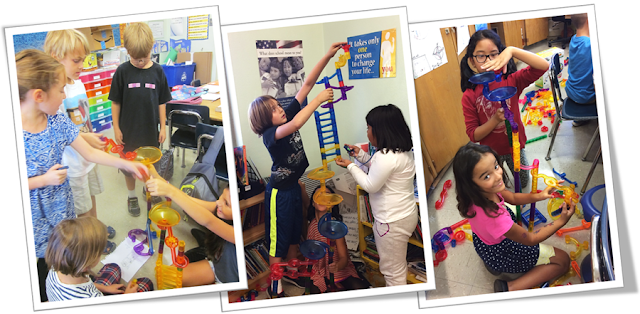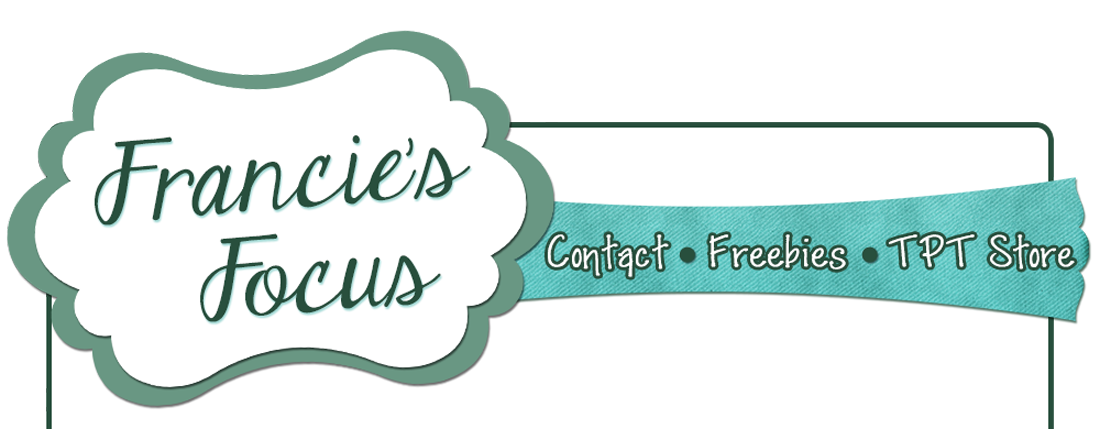We extended our weekend contest because DonorsChoose.org was down all weekend! Three teachers will each win 5 Marble Run Extreme Sets courtesy of Marble Genius on March 17-20 during our
Going Marbles and Feeling Lucky Caring Classrooms Contest! Visit the Caring Classrooms Facebook page for details:
https://www.facebook.com/caringclassrooms
Do you remember the thrill of dropping a marble into a maze and watching
it roll, spin, and finally end at the bottom of your run? Having your
students create a marble run can be a fantastic learning experience for
your students, and it makes a great STEM project, too. Believe it or
not, you might even be able to the materials for this project absolutely
free!
I recently decided to have my 3rd graders design and test marble runs as
a part of my Forces and Interactions science unit. I developed the
activity to address the Next Generation Science Standard 3-PS2-1: "Plan
and conduct an investigation to provide evidence of the effects of
balanced and unbalanced forces on the motion of an object."
When I began looking for materials, I discovered the
Marble Run Extreme kit from
Marble Genius which
looked like the perfect resource for this STEM activity. I was going to
order a kit from Amazon.com, but after noticing that many reviewers
were able to purchase the kit at a reduced price, I emailed the company
to ask about getting a discount. I ended up with something even better
than a discount... they offered to send me a kit for free! I also
ordered
a set of six stopwatches from Amazon that my students could wear around their necks so they could time their runs and make adjustments.
For our first class experience with marble runs, we had large teams and I
separated the kit so every team had the essential parts for their
marble runs. After the activity, I contacted Marble Genius to thank
them, and I raved about their Marble Run Extreme kit. I couldn't believe
it when Jeff Forgrave, the founder of the company, emailed me back and
offered to send me 10 more kits for free! One kit isn't really enough
for an entire class, and he wanted my students to experience a true
hands-on STEM lesson where every child could participate in designing,
building, and testing marble runs.
After the kits arrived, I had classroom parents label every piece so I
could easily put them back together again. Each kit includes 125
translucent plastic pieces and 20 marbles, so it was easy to make sure
every group had essential pieces to create their marble run. I rolled up
our classroom rugs and put them in the hallway so the marble runs would
have stability on our floor.
The Challenge: Building the Slowest Marble Run
When it was time to start the activity, I divided my students into small
cooperative learning groups and challenged them to design the SLOWEST
run! I gave each team a set of marble run materials including a
stopwatch, and I could feel the excitement and urgency in the room as
each team worked on trying to build the slowest marble run in the
classroom.
I loved hearing the excitement in my room as I watched how focused and
engaged my students were, from high achievers to struggling students.
One team discovered that the circular shape with the hole in the middle
is perfect for slowing down the marble. I had the rest of the class
watch that team’s marble run in action, and I challenged the other teams
to match their time and increase it!
Every team wanted to time their run and change their design so they
could increase the time it took for their marble to complete its run.
Both boys and girls worked together on their marble runs, and had no
difficulties making adjustments to the configuration of their marble
runs.
Besides creating a run with the slowest time, we tried some other runs.
One activity required the students to use all the pieces they were given
to create the fastest run, and another criteria was to choose 5 pieces
that could be removed from the kit that would help the run to be even
faster.
Creating marble runs was fun for my students, and they really loved the
activity. But what I liked best was the fact that they were
experimenting and making critical thinking choices while exploring Next
Generation Science Standard concepts related to forces and interactions!
Marble Run Extreme Kits
The
Marble Run Extreme
kits worked great for this activity! The pieces are easy to assemble,
sturdy, and made of colorful transparent plastic! My third graders are 9
years old, and the kits were so easy to use that none of them asked for
my help putting their Marble Runs together. We loved watching the
marbles as they traveled their way through the run because this kit
features transparent plastic, making it extremely easy to watch and film
the journey. Because I labeled the parts of each kit, putting the
pieces away in the correctly labeled box was easy to do.
If you do this activity with your students, I recommend purchasing
several kits so you'll have plenty of materials for your students to use
when designing their marble runs. The more marble run kits you order,
the more pieces each team has to work with. A total of 4-5 kits would be
perfect for a classroom of 25 students so there would be lots of pieces
for each team to work with.
If you order enough kits, you could even create a Makerspace in your
classroom where your students can design their own Ultimate Marble Runs
any way they want to!


 Each
teacher works with their classroom to collect 50 postcards representing their
state. They also brainstorm together what would be interesting to share about
their state and town. The teacher organizing the exchange shares the addresses of all involved, so
each teacher can easily print out and glue down the addresses onto their
postcards.
Each
teacher works with their classroom to collect 50 postcards representing their
state. They also brainstorm together what would be interesting to share about
their state and town. The teacher organizing the exchange shares the addresses of all involved, so
each teacher can easily print out and glue down the addresses onto their
postcards. 






